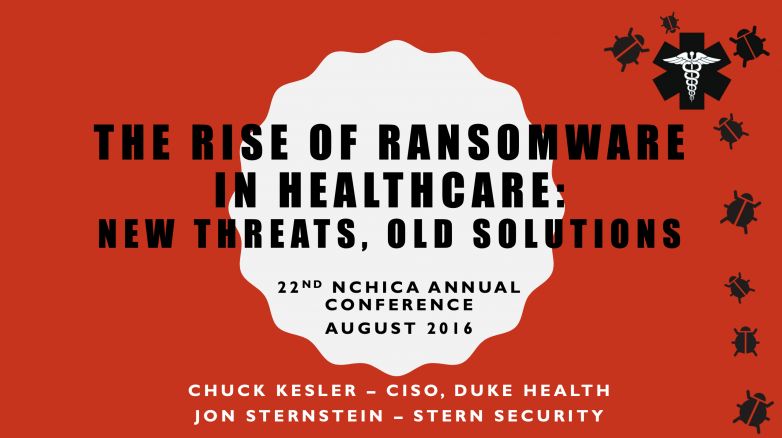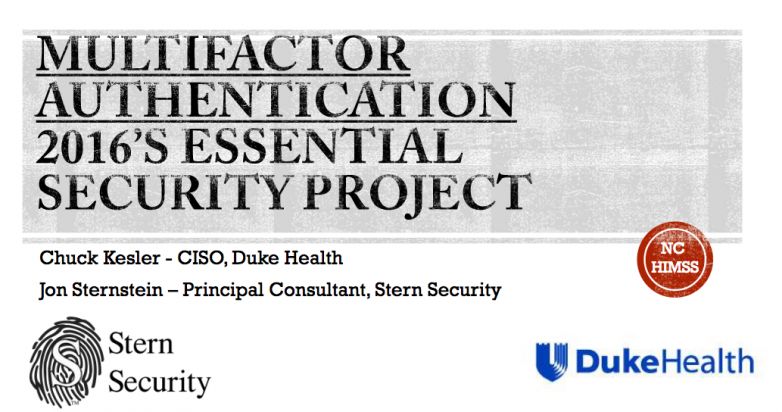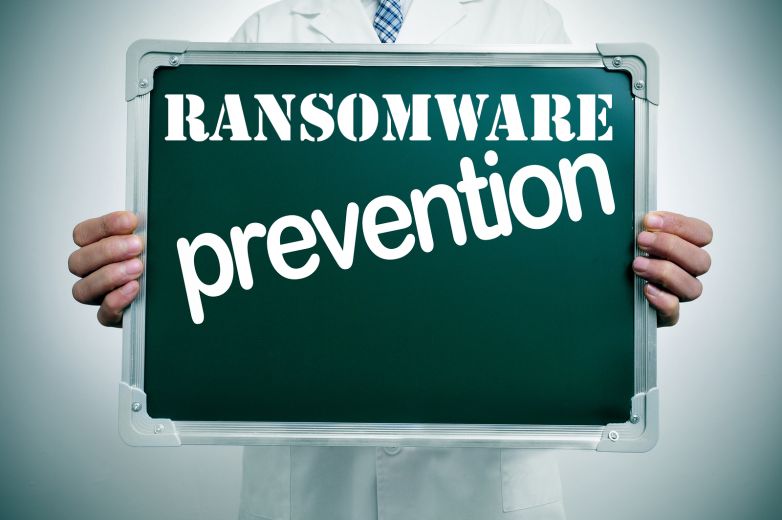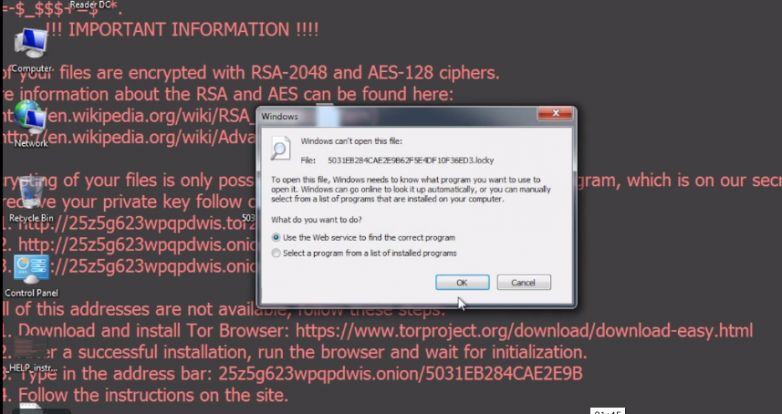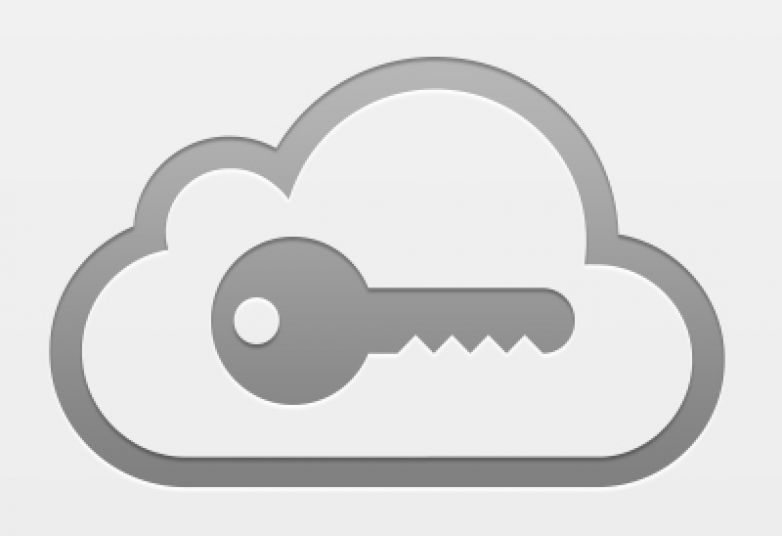At the August 2016 NCHICA Annual Conference, Chuck Kesler (CISO, Duke Health) & Jon Sternstein (CEO, Stern Security) teamed up to present on the ransomware threat in healthcare.
2016 NC HIMSS Annual Conference Multifactor Authentication – 2016’s Essential Security ProjectDuke Health’s Chief Information Security Officer (CISO), Chuck Kesler, and Stern Security’s CEO, Jon Sternstein, teamed up to present on multi-factor deployment strategies at the 2016 NC HIMSS Annual Conference. Date: April 20 & 21, 2016 Location: Hilton North Raleigh/Midtown Hotel3415 Wake Forest Rd, […]
We have compiled a list of security measures to implement to either prevent ransomware or limit the damage. Organizations need not implement all of these in order to prevent ransomware. However, these are various strategies that can be implemented depending on the company. Security measures such as “application whitelisting” will prevent most malicious software on […]
Stern Security Labs analyzed a Locky ransomware sample. The following video shows an actual Locky ransomware attack on a Windows 7 machine. Watch how fast the ransomware encrypts the files on the computer. The computer is encrypted within one minute of clicking on the malicious “invoice.pdf” file! Ransomware attack demonstration from Stern Security on Vimeo.
Background On January 22nd, 2016, the Food and Drug Administration released a draft guidance document titled “Postmarket Management of Cybersecurity in Medical Devices”. (Food and Drug Administration). This important document addresses the need for security throughout the lifecycle of several medical devices. Improving medical device security is a subset of President Obama’s February 19th, 2013 […]
All Apple users need to enable two-step verification on their iCloud accounts if they have not already. This protects your account by confirming your identity through a text message in addition to your password. So even if someone steals your password, they would need to steal your phone as well to get into your iCloud […]
What is the most important account that you own?…. Most people would say it’s their bank account, but many underestimate the value of their email account. If someone gets access to your email account, they can often access all of your other electronic accounts including your bank, LinkedIn, Facebook, Amazon, and more. With access to […]
- 1
- 2









